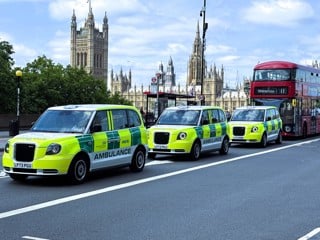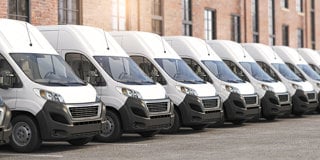Safety, cost efficiency and carbon footprint reduction: these three factors should underpin any fleet strategy, but sometimes they become mere lip-service statements of intent.
But not at Skanska, however: each is woven into the company’s culture, fully embraced by management and staff alike.
These three pillars form the basis for every element of Skanska’s fleet policy and come under the responsibility of Julie Madoui, head of fleet.
And they don’t simply extend to the car, van and HGV fleet: Skanska applies them equally to the 700 employees who have taken a car allowance and use their own car for business.
Take the driver risk management programme, for instance, which was developed with Peak Performance and Cranfield University.
The online assessments that initiate the programme began with the company car drivers and have now been applied to the grey fleet drivers and commercial fleet.
All drivers are graded high, medium or low risk which forms the basis for the type and timing of the one-to-one coaching that follows.
This stage starts with the high-risk drivers, before moving on to the medium and low-risk: over a three-year period, all drivers will have had one-to-one coaching.
The programme is complemented by workshops, toolbox talks and poster campaigns and is part of Skanska’s injury-free environment policy.
Any serious incident results in a line manager interview about lessons learned and ‘stand down’ sessions in which employees discuss events and share views.
This approach ensures that safety is ingrained into the company culture by making employees part of the solution.
Their feedback can result in changes to specification or people simply taking more care and communicating lessons learned across the business.
“The one-to-one coaching is with an assessor out on the road. It’s not training – we aren’t trying to tell them how to drive. It’s about awareness, thinking about driving styles and the risks and also considering fuel performance,” Madoui says.
“We started the programme in 2011 with an objective of reducing our accident ratio and reducing our insurance pre-miums. Around a third of our drivers are high risk, which is what we anticipated.
“So far we have reduced our incident rate by 8.5% and our cost of accidents by 30%. As a result, our insurance renewal premium has slightly reduced this year when we expected it to rise – and we hope to see further reductions in the future.”
Madoui believes it is important that the company treats grey fleet drivers the same as company vehicle drivers.
“From the employee perspective, they are still driving for Skanska,” she explains.
“We don’t want to differentiate between the two so we adopted the same process and they will also go through the programme.”

























Don Irvine - 09/01/2016 12:15
I'm about to join Skanska UK and am required to give you some ID information but struggling to find the right page. Can you help?